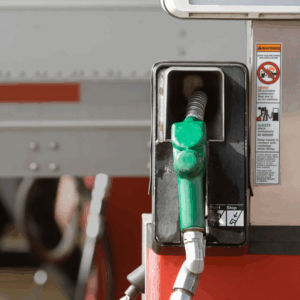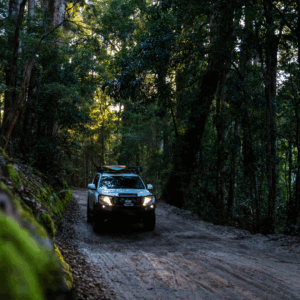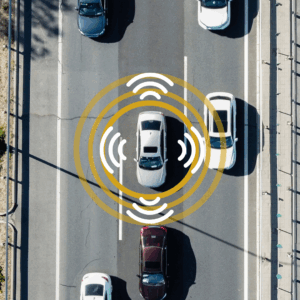Best Roadside Car Emergency Kit List for Colorado Drivers
Do you know how to pack a car emergency kit for winter driving in Colorado Springs? No matter how well you maintain your car, there will inevitably come a time when the weather turns bad, your car has a mechanical issue or you end up in an accident. Are you ready for a roadside emergency when you hit the road in the season ahead?
The Boy Scouts have a motto for navigating uncertainty that is short, sweet and to the point: Be prepared. When it comes to driving, especially in seasons with adverse weather conditions, it means having an emergency kit in your vehicle to keep you safe if you find yourself stranded on the side of the road.
At Honest Accurate Auto, we always recommend that our customers pack a kit with at least a few basics. The best car emergency kit is one that prepares you for a variety of circumstances. We see a lot of common car problems that are easy fixes if you have the right tools. However, simple problems can cause a great deal of trouble on deserted highways if a driver doesn’t have a car kit. We’re sharing our best tips for packing your own kit and why you need these essential items.
What to Pack in Your Roadside Emergency Kit
When creating a list of what to pack in your vehicle’s roadside emergency kit, it’s useful to know why you need these items. We want to help you pack the most comprehensive kit possible and understand why every item is necessary. We’ve broken it down into a few simple groups to help you navigate. If you feel you’re car savvy enough, you can skip straight to the list.
The Basics
These are the basic items every vehicle owner should have in their vehicle, no matter their automotive skill level or the season at hand. Even the best assistance can take hours to arrive during peak demand like a blizzard or an ice storm. These tools give drivers more control in an emergency situation. Remember, even if you are not experienced with certain aspects of car repairs, a Good Samaritan passing by might be able to use these tools to help you.
Jack and tire iron: These tools are so important they come standard in almost every car. They allow you to change a tire anywhere you have a flat, steady surface. Be sure to check your spare regularly to ensure you won’t find a new problem to solve.
Jumper cables: Jump start your car with the help of another vehicle. Read and follow instructions carefully to prevent battery damage or car fires.
Battery jump starter: For the times you don’t have another car to assist, a portable battery jump starter can give you the boost you need to jump start a dead battery.
Tire pressure gauges: Check your tire pressure before long trips or if your dash lights come on. Use this tool to check your spare or a low-looking tire.
First aid kit: From bandages for kids to gauze pads for more serious wounds, an auto emergency first aid kit is a handy way to take care of injuries on the road.
LED Flashlight: Use to assist during roadside repairs at night or alert traffic to your presence on low-visibility roads.
Cell phone charger: Put this in your kit and never remove it. One of the worst feelings is breaking down and realizing you may not be able to use the fastest tool of all to call for help or get information.
Rain poncho: Colorado rains can be drenching. A poncho can help you stay mostly dry as you manage the situation.
Small Tool Kit: Include basic tools like pliers, screwdrivers (flat and Phillips head), adjustable wrench, wire cutters, vise grips, tire pressure gauge, duct tape, electrical tape, bungee cords and a pocket knife.
Fire Extinguisher: A small ABC fire extinguisher made for vehicles (for wood, paper, cloth, gasoline/oil/grease, and electrical equipment).
Winter Readiness
Winter readiness is vital because it is one of the most difficult times to experience a roadside emergency, particularly in Colorado. One minute you’re driving to the store in flip flops to pick up cat food, the next minute you’re peering into a white-out blizzard and hoping you don’t have to get out and make an emergency repair in your t-shirt.
To understand just how bad winter conditions can get in Colorado Springs, in 2019, a weather condition known as a bomb cyclone caused massive snow and hurricane winds. According to a KOAA News article, the storm left over 1,500 drivers stranded in their cars on roads across El Paso County, including I-25. Emergency services were stretched to their limits. Drivers were forced to remain in their cars for hours in adverse conditions.
Cat litter: This gritty substance can help car tires gain traction on icy roads (or in icy parking lots).
Snow Shovel: Dig your car out of deep drifts or remove snow if you get stuck in a ditch or a plow bank. This is a must for a winter car emergency kit in the Pikes Peak region.
Blankets: Stay warm and conserve fuel by wrapping up in the car. Blankets are also handy for warming up stranded motorists or accident victims in cold weather.
Candles: Candles produce a surprising amount of warmth in the car and can help conserve fuel. Be extremely careful with this heat source and supervise the flame at all times.
Extra winter clothes: Colorado weather is unpredictable, so it’s a good idea to keep at least a warm winter coat in the car at all times. It is quite possible to experience an extreme temperature drop in mere hours.
Snacks: Keep an emergency supply of shelf-stable protein bars and other snacks in the car to fuel you if you get stranded for more than a few hours.
Water: A gallon of water (or two) is handy for hydration and for radiator issues. Be sure to keep it stored out of the sun to avoid contamination from heated plastic.
Roadside Visibility
One of the most dangerous aspects of a roadside emergency is getting out of your car on a busy street or highway. Distracted drivers and poor weather are just two examples of conditions that pose a real threat to your safety as you change a tire, check under the hood or attempt repairs. It’s important to make yourself as visible as possible. This will help prevent potential accidents.
Reflective safety vest: Stay safe while changing tires or assisting fellow drivers by making yourself as visible as possible to drivers.
Road flares: For serious accidents or search and rescue needs, flares are a helpful tool. However, you should always check with state guidelines, particularly in fire-prone regions.
Reflective triangles: Place reflective triangles spaced out behind your vehicle. They will give other drivers more notice that there is a hazard ahead and protect you from being hit.
Operable hazard lights: Your hazard lights are a signal to other drivers that something is wrong. Check your lights periodically to ensure they work. You can learn more by clicking the link to our blog on driving visibility.
Accident Assistance
Time is of the essence in many car accidents, and there may come a time when you will need to help yourself until emergency services arrive. These simple tools can mean the difference between life and death in a serious automotive emergency. The tools can also be used to assist other motorists.
Note: Always contact emergency services first so you can be advised on how to assist. Additionally, ensure that you do not interfere with emergency personnel on scene.
Seatbelt cutters: A seatbelt cutter can quickly and easily remove restraints so you can evacuate the vehicle in an emergency.
Window breaker or safety hammer: These handy tools help you shatter windows so you can exit the vehicle if the doors are inoperable.
Emergency heat blanket: Foil blankets trap heat while holding off moisture. Passengers can stay warm if they must exit and remain out of the vehicle during adverse conditions.
Go the Extra Mile
If you’re a super fan of the Boy Scout motto, we’ve included a few items that will help you go the extra mile in creating an emergency roadside kit. Even if you don’t use these tools yourself, we’re confident they’ll come in handy if you have to rescue a stranded loved one or help a fellow motorist out there on the road.
If you’re on the fence about these additional items, just remember this: the extra tiny bit of space in the trunk is probably worth sacrificing if it means you can get home safely. Let’s take a look at some additional ways to fill out your roadside emergency kit.
Two quarts of engine oil: Oil should stay in the garage, right? Not so fast! Even the most conscientious drivers can get bogged down by life challenges and neglect to check the oil until the dreaded light comes on.
Gallon of antifreeze: This tool is as useful in the summer as it is in the winter and is also helpful for assisting other drivers who are stuck with an overheated car or concerns about a sudden cold snap.
Windshield wiper fluid: If you’re a new Colorado Springs driver, you may be shocked at how filthy your windshield gets after a snowstorm. Cars kick up a lot of filthy water after the snow begins to melt, and you’ll find yourself using the washer fluid constantly in order to see. This is especially true when driving in the sun.
Hydraulic/floor jack: These jacks have become surprisingly easy to carry in the car and are fairly affordable. They allow the user to lift the vehicle more quickly and easily than standard jacks.
Tow rope: A tow rope can help pull drivers from ditches or tow a disabled vehicle home. The latter is quite tricky if you’re not experienced, so be sure to ask for help. When in doubt, call a professional to service.
Tire repair kit: These kits offer temporary fixes to help you get to a tire shop and get a proper fix. They are handy if your spare is flat or if you have the misfortune of multiple flat tires.
Portable air compressor: A portable air compressor can inflate a flattened tire after repair, air up a low spare or give the driver enough air to get to a safe location or repair shop.
Should I Buy a Pre-made Roadside Car Emergency Kit?
When it comes to packing your roadside emergency kit, you have the option to skip the DIY and purchase a pre-made car emergency kit. You’ve probably seen them in big box stores like Walmart or Costco and in parts shops like Autozone. They are a great option if you are searching for an easy emergency car kit for teenagers learning to drive or a loved one with a new car.
Off the shelf safety kits are pretty handy for drivers and if that’s the option you choose, you’ll be in good shape. Before you buy one, be sure to review these pros and cons to purchasing a pre-made roadside emergency kit so you can fill in any gaps. For example, it’s rare to find car emergency kits with shovels, so you may have to supplement your purchase with additional tools.
Pros of Purchasing a Pre-made Car Emergency Kit:
- Kits include a variety of items from the list above for a single price
- Typically comes with a carrying case to make it compact and easy to store
- Items are sized to take up less room in the vehicle
- Reduces the need to shop around and gather tons of items
- Some kits offer discounts on towing or one-time roadside assistance services with purchase
Cons of Commercial Emergency Roadside Kits
- Items may be poorly made
- Kit can be hard to re-pack
- Important items may not be included
- Many kits can be pricey
Car Emergency Kit List
The Basics
- Jack and tire iron
- Jumper cables
- Battery jump starter
- Tire pressure gauges
- First aid kit
- Flashlight
- Cell phone charger
- Rain poncho
- Small tool kit
- Fire extinguisher
Winter Survival Kit
- Cat litter
- Snow shovel
- Blankets
- Candles
- Extra winter clothes
- Snacks
- Water
Roadside Visibility
- Reflective safety vest
- Road flares
- Reflective triangles
- Operable hazard lights
Accident Assistance
- Seatbelt cutters
- Window breakers
- Emergency heat blanket
Extra Mile Items
- Two quarts of engine oil
- Gallon of antifreeze
- Windshield wiper fluid
- Hydraulic/floor jack
- Tow rope
- Tire repair kit
- Portable air compressor
There’s no need to make an already frustrating experience even worse. Packing a car emergency kit can help ease the stress of a breakdown and keep you safe until help arrives. And remember, if you are ever in need of help in repairing your car after a breakdown, give us a call! We offer fair, honest and accurate service you can trust to get you back on the road (safely) once again.



